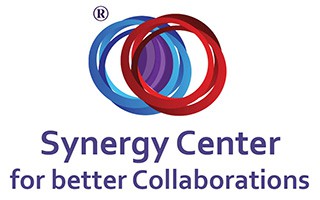The perception of a mix of interactions and boundaries is subjective. For instance, what you perceive as a “sense of mission” to “assist” could be interpreted as an invasion. And so, employees or managers have different views of how interactions play out in an organization.
You can hand out a seven forms of interactions questionnaire to your employees to determine the perception of interactions. Quality forms must dominate most of the interactions. That is, more than 70 per cent of interactive forms must be quality. The acceptable standard for perception of destructive forms should be between 2% and 3%, and 7% at worst.
Otherwise, in synergy terms, your organization is “’sick”; hence, requires measures tailored to specific indices of perceptions to cure it. This isn’t to say that you should ignore the neutral forms. While the latter may seem harmless, they may change to destructive forms. As a manager, you must aim to reduce the destructive and neutral forms, and maximize the quality forms. This article is all about discussing how to reduce invasion between two employees. Hop on.
The Process of Reducing Invasion
It’s common to find an experienced employee or manager to take up the role of an inexperienced counterpart. This could be partly because the experienced colleague thinks that their counterparts are weak or incompetent. This situation is especially seen in promotion when an experienced employee or manager leaves a role that they’ve occupied for a long time, and their performance in that role has been excellent.
And so, they leave a shoe that’s too big for the incoming worker to fill. In some cases, because of power culture, invasion and counter-invasion are common in organizations where power grabbing is a norm. In addition, job dissatisfaction and unclear boundaries could contribute to a sense of invasion.
When you seek to reduce invasion, reach out to the invader first. Your goal is to ensure that the invader understands the consequences of their actions, which could damage a team, unit, process, division or organization. But before you reach out, you must understand deeply the conflict between the two parties.
Normally, the invaded is the “victim”. From an invader’s standpoint, they see nothing wrong with their action. And so, the invader would always oppose the claims of victimization by the invaded. Unfortunately, the process of reconciling the two conflicting parties consumes lots of resources.
As a mediator, you can use the seven forms of interaction for an invasion interaction to guide your actions. The graph can enhance your argument in a discussion with the invader. Believe it or not, it can help you find a common ground.
Then, you can work with both parties. Summon both parties to a sitting, and listen keenly to the arguments of either party. Take note of how they express their feelings. Verbal and non-verbal expressions can give you a clue as to their humility, aggression, and quietness. In addition, evaluate whether they intend to attack each other personally.
Lastly, resolve the conflict between the two according to the causes. There’s no “cure all” solution. Employee’s perception of a mix interactions is subjective. The solution must serve a specific problem and individual. For example, a perception index for invasion or obscurity, which is 5% doesn’t require same solution as one which exceeds 7%. Therefore, handle the cases separately.
A Case of a “Happy Waves” Company
An electronic company produced and sold components for a microwave market. The organization had a manufacturing plant, which consisted of four managers: the chief executive officer (CEO), the finance manager, the acquisitions manager, and the operations manager. The plant’s administration outsourced functions such as human resources, research and development, and marketing to the mother organization.
The factory was famous for high outputs and high levels of synergy in the administration. And so, the managers regarded the organization’s CEO highly. They described their relationship with their topmost manager as “pleasant”, “easygoing” and “everyone knows their job and carries it out. And whenever necessary, we work as a team and cooperate together.”
As anyone else, the CEO left the plant for a new role in the mother organization. The decision for his replacement wasn’t reached yet. The decision was also open to sourcing his replacement from outside.
The CEO’s statement didn’t bode well for the managers. And so, disharmony and imbalance arose. A power struggle had officially begun. In the organization, the acquisitions manager was second-in-command; hence, naturally, he expected to replace the outgoing CEO. The problem was that he was power-hungry. To increase his power, he invaded the roles of the other managers.
Tension grew between the managers. The statement by a manager during a meeting highlighted tension: “We felt unable to freely express ourselves, and when we did, arguments immediately flared.”
The situation prompted the outgoing CEO to not involve the managers in decision-making. The reason for CEO’s actions was that, “Strong tension was felt and I was forced on any number of occasions to intervene in conflicts among my team members, and take decisions on my own because of the constantly oppositional views.”
In the end, the organization brought in a replacement from outside. Meanwhile, the ability of the management to improve interactions and cooperative had reduced. The organization hired a consultant who applied the seven forms of interactions questionnaire.
The consultant handed out to the questionnaire to the managers to determine their perceptions of interactions. The questionnaire was tailored to two specific contexts: the time before the CEO announced his decisions to quit and the time after.
The responses – findings and examples – indicated that quality forms of interactions dominated with 85 per cent. But when the CEO announced his departure, the perception of invasion by managers rose to 23 per cent except for the acquisitions manager. Invasion perception by the latter was lower, and he reported common quality interactions – synergistic and interfaced forms.
The responses informed the consultant’s solution of a selective, corrective measure. Hence, he met up with the acquisitions manager first. He explained to him how others perceive his actions as invasive through the data and graph. The consultant also ensured that the acquisitions manager understood the how his actions affected other managers. Afterwards, the consultant met up with all the managers with an intention to strengthen the team. The consultant put lots of emphasis on clear boundaries, and on the prevention of the possibility of invasion and obscurity.
And so, the solution involved redefining boundaries. And the meeting involved managers airing their grievances. This worked toward restoring harmony and balance, and eliminating invasion that had developed during the transition.
The Process of Reducing Neutral Forms in the Organization
Neutral forms can seem harmless at first, but they can turn into destructive forms. It’s a good idea to look at the areas where they may develop, and come up with measures to reduce the possibility of an occurrence. For example, a manager’s or employee’s response to email isn’t timely. The person who sends the emails may perceive the actions of their colleague as a one-way communication pattern, or no connection.
If nothing changes over a long time, the sender may perceive the actions of the email receiver as invasive. The point is, the email sender perceives the receiver as someone who prevents them from carrying out their role effectively. The sender could also feel that the receiver doesn’t respect their role (or ridicules their role).
The questionnaire is an effective tool to identify neutral forms, because from responses of the complainers, you get examples of the instances under which one-way communication occurs. When you know the source of the problem, then it becomes easy to reach out and find a solution. For example, you can harmonize the expectations of the sender and the receiver by scheduling email responses. This step can contribute toward improving interactions.
Reach out to the Invader first…
The first thing to do when resolving conflicts is to hand out the seven forms of interactions questionnaire to conflicting parties. Then, you can analyze their responses – findings and examples. From this analysis, you can identify the invader and the invaded. Afterwards, you can meet up with the invader, and make them understand how their actions impact others. Just be sure to back up your explanations with data and the invasion graph. Once it’s clear the invader understands the consequences of their actions, call a meeting that involves both parties. Listen to both sides carefully. Come up with a corrective measure that’s tailored to individual’s need. That’s it!





ergfirnolikz
9 Jan 2019Hello very nice blog!! Man .. Excellent .. Amazing .. I’ll bookmark your website and take the feeds also…I am satisfied to search out a lot of useful info right here within the post, we want work out more techniques in this regard, thank you for sharing.